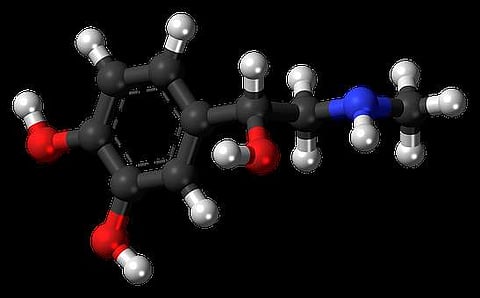

A recent study has provided researchers with a dataset of millions of hormone tests from medical records that shows seasonality with a winter-spring peak in hormones for reproduction, growth, metabolism, and stress adaptation. The hormone seasonality indicates that, like other animals, humans may have a physiological peak season for basic biological functions.
Uri Alon and colleagues analysed the results of hormone blood tests between 2002 and 2017 from nearly 3.5 million adults aged 20 to 80 years and living in Israel. Data were sourced from the medical database of the Israeli health-service Clalit. The test results revealed that human hormones exhibit patterns of seasonality. Effector hormones peaked between winter and spring. However, most upstream-regulating pituitary hormones for growth, reproduction, and stress peaked in late summer.
The delay of pituitary hormones was unexpected, given that hormone circuit delays typically last hours rather than months. The authors also determined that adrenal and pituitary gland masses grow within months due to hormones' trophic effects, which produce a feedback circuit with a natural annual frequency. The findings suggest that hormone seasonality in humans may have a physiological peak season for biological functions, according to the authors.
The specific seasonal phases of the hormones were used to suggest a model for a circannual clock in humans and animals that can keep track of the seasons, similar in spirit to the circadian clock that keeps track of the time of day.
Hormones control the major biological functions of the stress response, growth, metabolism, and reproduction. In animals, these hormones show pronounced seasonality, with different set-points for different seasons. In humans, the seasonality of these hormones remains unclear, due to a lack of datasets large enough to discern common patterns and cover all hormones. The study analyzes an Israeli health record on 46 million person-years, including millions of hormone blood tests.
Clear seasonal patterns were found, the effector hormones peak in winter-spring, whereas most of their upstream regulating pituitary hormones peak only months later, in summer. This delay of months is unexpected because known delays in the hormone circuits last for hours.
This study explains the precise delays and amplitudes by proposing and testing a mechanism for the circannual clock: The gland masses grow with a timescale of months due to trophic effects of the hormones, generating a feedback circuit with a natural frequency of about a year that can entrain to the seasons. Thus, humans may show coordinated seasonal set-points with a winter-spring peak in the growth, stress, metabolism, and reproduction axes.
Major biological functions in mammals, like growth, reproduction, metabolism, and stress adaptation are controlled by dedicated hormonal axes. In each axis, signals from the hypothalamus cause secretion of specific pituitary hormones into the bloodstream. The pituitary hormones instruct a peripheral organ to secrete effector hormones with widespread effects on many tissues.
For example, the stress response is governed by the hypothalamic-pituitary-adrenal (HPA) axis: Physiological and psychological stress signals cause the hypothalamus to induce secretion of ACTH from the pituitary, which instructs the adrenal cortex to secrete cortisol. These axes act to maintain physiological set points. The setpoints can change to adapt to different situations, a concept known as rheostasis.
Animals show seasonal changes in the pituitary and effector hormones that govern seasonality in reproduction, activity, growth, pigmentation, morphology, and migration. This adaptive physiology includes changes in body composition, organ size, and function. In general, hormone seasonality is thought to be a dominant regulator of physiological and behavioural traits in animals.
Animals show these changes with a circannual rhythm even when maintained in constant photoperiod and temperature conditions. They cycle without external signals, by means of an internal oscillator with a period of about, but not exactly, 1 y. The mechanism and physiological location of this circannual clock is a subject of current research. A key component is the pars tuberalis in the pituitary stalk, whose thyrotrophin cells oscillate between high and low states of hormone production. This area receives input on photoperiod from melatonin signals.
Whether hormones show seasonality in humans has not been studied comprehensively by tracking many hormones in a large number of participants. Each axis has been studied separately, usually with small samples. These studies suggest that thyroid hormones and cortisol show a seasonal variation on the order of 10%. The studies are limited by considerations of circadian rhythms which affect cortisol and other hormones.
To study human hormone seasonality requires a large dataset with comprehensive coverage of all hormones. Such a study was provided using an Israeli medical record database with millions of blood tests. It addresses the circadian rhythm concern using the time of each test and found coordinated seasonality with a winter/spring peak in effector hormones and surprising antiphase between pituitary and effector hormones.
It provides an explanation for this antiphase by showing that trophic effects of the hormones create a circuit in which the functional masses of the glands changes over the year and can entrain to yearly signals. The results support a winter-spring peak for human reproduction, metabolism, growth, and stress adaptation.
